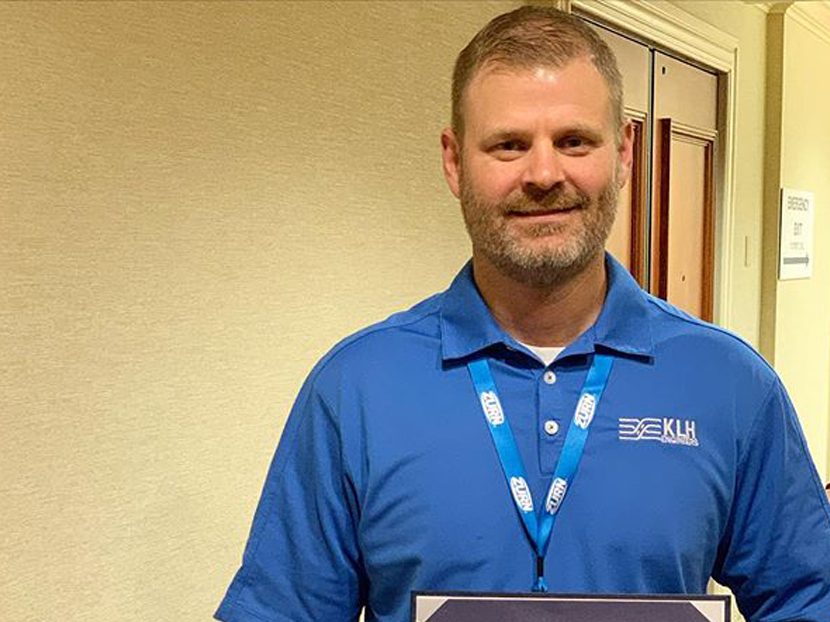Q&A on Digital Specification Tools
Conversation with 2019 Zurn Specifier of the Year

Automation simplifies many processes in our work lives these days. To achieve that for plumbing specification projects, there’s quite a bit of complexity to cut through. The process is layered. Configurations vary to infinity. Collaboration extends from internal teammates to contractor partners.
In August 2018, Zurn launched its digital specification tool. inSpec, powered by Zurn, became a reality thanks in large part to voice of customer. Plumbing engineers weren’t only looking to streamline the manual process; they wanted more interaction pathways and document generation. With its success, the company brainstormed how it could give a nod to early adopters and innovators behind the tool’s inspiration.
Just a few months back, Zurn introduced its Specifier of the Year contest for the American Society of Plumbing Engineers. The contest recognizes professionals applying digital tools to streamline plumbing specification process workflow, scheduling and project sharing.
It goes beyond ditching the manual way. Specifier of the Year opens the dialogue for more development. Dave Texter received the honor in October 2019 at the American Society of Plumbing Engineers (ASPE) Symposium. His essay demonstrated process simplification through digital tools, while taking it a step further to apply capabilities across his team and consider future enhancements.
Most of us aren’t early adopters and most of us want to know more on digital specification tools. So, who better to seek out for our Q&A on the subject matter than Dave Texter – the first-ever Specifier of the Year recipient?
Q: Could you briefly summarize your role and experience as a plumbing engineer?
A: I’ve been in the plumbing engineer industry for six-plus years, fulfilling roles as a project designer and engineer. My responsibilities include code research, utility coordination, system design, layout, product scheduling, and specification editing.
I’ve quickly risen through the ranks to become the Director of Plumbing Engineering at our firm. I oversee the development and maintenance of design and engineering standards used by the rest of the plumbing engineers and designers in the company.
Q: What do you enjoy most about what you do?
A: I enjoy creatively solving the challenges our engineers face on a regular basis. I excel at product research and design implementation.
Q: How did you hear about the Specifier of the Year contest?
A: Plumbing Engineer magazine advertised the contest for American Society of Plumbing Engineers (ASPE) members.
Q: How does being an ASPE membership help with career development?
A: Being an ASPE member introduces many learning opportunities for honing my craft.
Q: What obstacles did you typically encounter with the manual specification process?
A: The manual process can lead to inaccurate or outdated information. It can also produce unrelated drawings. Meaning, if something changes in the drawing documentation, it needs to be reflected in the written documentation and vice-versa. Either could be lost in translation.
Our firm utilizes MasterSpec format. Instead of writing a specification from scratch every time, we edit the standardized specification.
Q: How do digital tools remedy some of the pain points?
A: We’re just starting to realize the potential of software integration and data connectivity. The real power will come when we can seamlessly integrate real-time manufacturer product information directly into the elements that live in a working 3D model.
Full project transparency occurs when all players in the value stream – owner, architect, engineer, contractor, and install – work in a singular project platform. That way, they can share, view, and modify data in real time.
Q: What could still be developed to ease the process and your job?
A: I’d like to utilize a Cloud-based database that houses project documentation and can be accessed by all team members anywhere, at any point. Imagine a world where we integrate the manufacturer into the design team. A world where they could be involved in providing the best price to the contractor during the bidding phase of a project.
This would allow the engineer to work closely with a group of manufacturers to specify the necessary components for a project and provide pricing for a contractor to evaluate. That process improvement would bring bidding into the forefront of a project.
Q: Do you think a tool, like inSpec, would help you in your spec process?
A: inSpec is a tool that is peering into the future. Currently, the data stored in Zurn’s website is not fully accessible by all members of the design team. Other manufacturers will need to get onboard quickly to catch up to the technology that Zurn is bringing to the marketplace.
Q: Is there anything you would like to add?
A: I appreciate Zurn taking the time to bring innovation to the marketplace.
More and more, plumbing engineers rely on tools and technologies as a service, not just products. We all win from insights gained through this contest. Above all, the contest participants and industry professionals, like Dave Texter, deserve recognition for paving the way for future development.




